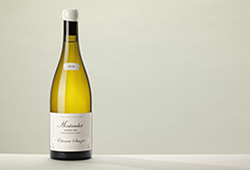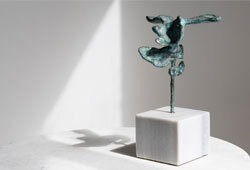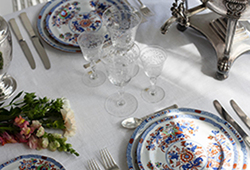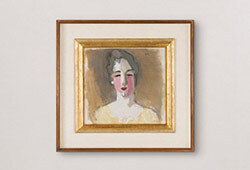Elefanter, ett par, cloisonné och champleve, Qingdynasti, 17/1800-tal.
Elefanter ståendes med huvudena svagt svängda inåt, långa betar och svängd snabel som är uppdragen mellan betarna. Sadeltäcke/schabrak med lotusdekor, sadel som bär upp en vas med lock. Höjd 35,5 cm.
Emaljskador. Lagningar.
Proveniens
Previously in the Collection of sea captain Lennart Treys, Borgå, Finland.
Litteratur
Models of elephants were very popular in Imperial China and made from various media to adorn halls and throne rooms throughout the Imperial palaces. They are associated with strength, wisdom and long-life and are also significant animals within the Buddhist religion. A prominent member of the Buddhist pantheon, Samantabhadra (Puxian), is frequently shown seated on an elephant. They are considered guardians of honour and were symbols of peace and good harvests. The elephant in China is also one of the seven Buddhist Sacred Treasures and symbolises peace. The combination of a vase ping 瓶), punning with 'peace' ping 平), and elephant xiang 象, homophone with the word for 'sign' or 'portent', forms a rebus for the phrase taiping youxiang (太平有象), meaning 'Where there is peace, there is a sign (or elephant)'.














































